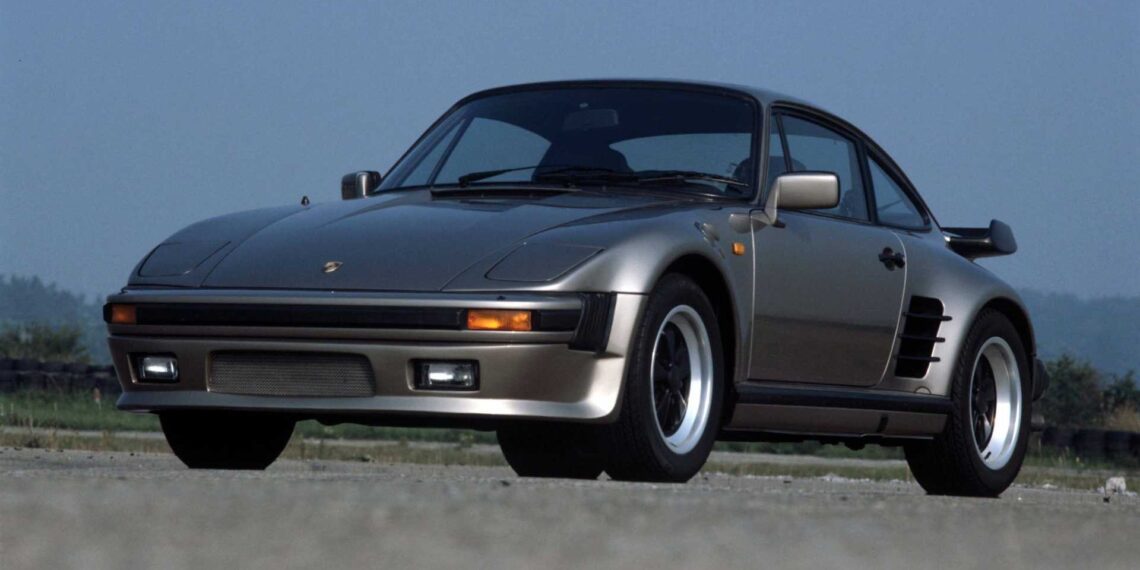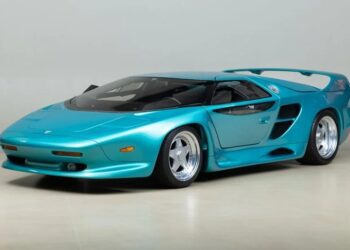Try to buy a Porsche 911 today, and you’ll run into a seemingly never-ending list of optional extras. While prospective owners can obsess over paint and stitching colors, 40 years ago, Porsche wouldn’t just finish your car in a unique shade. If you ticked the right box, you could give your 911 Turbo a whole new hand-built front end.
This is the story of the Porsche 911 Turbo Flachbau, also known as the “slantnose.” Like some of history’s most exciting cars, the Flachbau’s story involves racing, exorbitant customer demands, and a painstaking production process. What was supposed to be a one-off for a well-known VIP became the most expensive optional extra available for a 911. Due to its high entry price and low production numbers, the 911 Turbo slantnose remains one of the rarest air-cooled Porsches ever built.

A Special Wish From A VIP
The Flachbau’s story begins in 1976 with the Porsche 935’s arrival, a 930 Turbo-based race car. Like the road car, it counts on either a 3.0-liter or 3.3-liter turbocharged flat-six, a four-speed manual transmission, and rear-wheel drive. While it was mechanically similar to its road-going sibling and the 934 that preceded it, the 935’s defining visual feature was its nose.
Instead of wearing a traditional 911 front end, it had, for lack of a better word, a slantnose. The 935 was the only air-cooled 911 to employ pop-up headlights for aerodynamics, giving this racing legend its distinct look. It was successful, too, winning 123 out of the 370 races it ran during its six-year stint. Unfortunately, new FIA regulations for 1982 cut its racing career short.

Nevertheless, the 935 made an impression on enthusiasts creating a desire for a road-going slantnose. Aftermarket tuning houses such as Ruf and Kremer stepped in to fill the demand with Flachbau-style conversions. But Techniques d’Avant Garde (TAG) owner Mansour Ojjeh didn’t want to go aftermarket. Instead, Ojjeh submitted a request to Porsche’s Special Wishes program, now known as Porsche Exclusive, to produce “a 935 racing car for the street – but with all the luxuries, of course,” says Classic Driver
Ojjeh wasn’t just any customer, though. At the time of his exorbitant request, TAG had entered a partnership with Porsche to develop a 1.5-liter V6 Formula 1 engine for McLaren, making him a proper VIP. The result was the 935 Street, an apt name as the car barely resembled its 930 Turbo base. It wore 935 bodywork, featured a 375-hp flat-six out of a 934, and a Brilliant Red Exterior finish. Porsche implemented over 500 modifications to create the 935 Street, of which just one exists.

How Many Flachbau’s Did Porsche Make?
Following the 935 Street’s construction, the German carmaker decided to offer the Flachbau for the 911 Turbo from 1982 to 1989 through its Porsche Exclusive (formerly Special Wishes) program. This was partly because the slantnose bodywork had to be molded by hand as it wasn’t a production car. It wasn’t until 1987 that the Flachbau option (M505 for the US market, M506 globally) was available for order through traditional dealers for just over $23,000.
In the late 80s, a Porsche 911 Turbo started at around $60,000, meaning the Flachbau option combined with other extras could raise the car’s price by nearly 50 percent. This would be like ordering a $216,100 Turbo S today and selecting and spending $100,000 to give it a new front end. Naturally, the slantnose wasn’t a popular option despite becoming widely available.

During its eight-model-year run, Porsche produced just 984 units of the 930-based slantnose, of which three are currently available for purchase via duPont REGISTRY. The Flachbau returned for the 964-generation Turbo S, of which 39 went to the US market out of a 76-unit global run. In 2018, Porsche revived the slantnose look with the second generation 935 based on the GT2 RS, of which just 77 exist.
Sources: Classic Driver, Porsche












